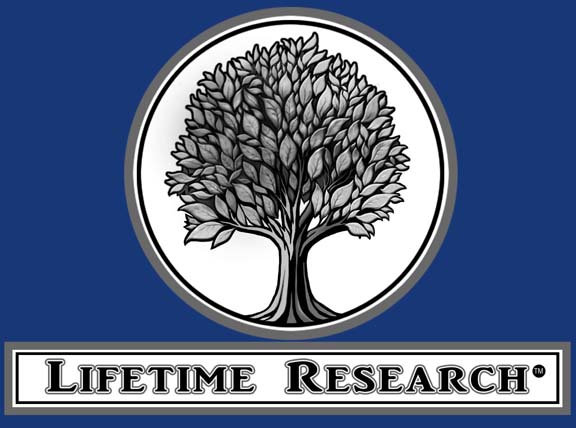
If another school has merged into your institution, you are responsible for reporting that school’s students under the OPEID in which they were enrolled as of June 30, 2024, or where they completed or withdrew. In scenarios where data from the other school is unavailable, your school should be prepared to provide an explanation for why reporting was not completed. Because institutions report institutional debt owed by a student as of the day the student graduated or withdrew from the program, there is no difference between GE Programs and Eligible Non-GE Programs when reporting Total Amounts of institutional debt for a student. For students who have withdrawn from or completed the program, the institution will report cumulative totals for that student, which would cover the student’s entire enrollment in the program, both before and after any withdrawals.
What information do I need to report for FVT/GE?
Other sections of the broader regulatory package released in May with the gainful-employment rule are still in the works and could be delayed because of a shutdown. We begin below with the status of the litigation and the Department’s surprising announcement, followed by some thoughts regarding the agency’s motivations and plans. The Department plans to make its program information system available by July 2026, and will provide more information on that process in the future. In April 2024, AIR surveyed members to better understand the resources and training needed to accomplish FVT/GE reporting.
Volume 1 – FVT/GE Student Submittal Reporting Updated
Amounts owed by students to the institution under the Federal Perkins Loan Program should not be reported as institutional debt. Since the number of program completers may vary by year, the Department may use cohort periods of different lengths to calculate the rates for the same program in different years. For example, the Department may use the 4-year cohort period data to calculate the rates for a program in one year and it may use the 2-year cohort period data to calculate the rates for the same program in another year. Note that although these legacy liberal arts bachelor’s degree programs are not GE programs, all such programs (except for Comprehensive Transition and Postsecondary Programs) are subject to reporting and other requirements under the FVT regulations. If a proprietary institution acquires a liberal arts bachelor’s degree program (either by purchase, merger, or any other transaction) after January 1, 2009, the exception does not apply since the program was not continuously provided by the proprietary institution since that date. Therefore, the liberal arts program must lead to gainful employment in a recognized occupation to be eligible for Title IV aid and is considered a GE program.
FSA Training Center Resource Page – Financial Value Transparency and Gainful Employment
Please refer to Volume 3 – FVT/GE Completers List of the NSLDS FVT/GE User Guide for guidance on understanding the content of the Completers List, reviewing student data, identifying exclusions, and other relevant topics. Nearly 100% of America’s colleges and millions of students rely on the National Student Clearinghouse every day. The acknowledgement requirements will become effective on July 1, 2026 after the Department has established the program information website. Make sure you visit the FVT/GE page on Compliance Central for convenient access to all our resources on signing up for, activating, and using our FVT/GE reporting solution. We’ll also update this FAQs page as we obtain additional clarity from Federal Student Aid (FSA) on FVT/GE technical requirements and specifications. Contact your institution’s Clearinghouse User Administrator to be assigned either the FVT/GE Financial Aid Officer or FVT/GE Financial Aid Viewer role to receive the automated updates.
Programs
Under the HEA, an eligible Title IV program must lead to a degree, certificate, or other credential awarded by the institution. There is, however, an exception for a program that is at least two-academic years in length and that is acceptable for full credit toward a bachelor’s degree. This exception is provided to allow students who are enrolled in non-credential transfer programs (generally offered by community colleges) to be eligible for Title IV aid as they prepare to transfer to a four-year degree program. Such programs are also not Eligible Non-GE Programs because they do not lead to a recognized credential provided by the institution. The FVT/GE reporting requirements apply to an institution’s currently eligible programs and to any of its previously eligible programs for which the Department has data in the National Student Loan Data System (NSLDS).


As noted above, the Department will notify an institution of any restrictions on Departmental approvals of GE programs each time the D/E and EP measures are published. The process for calculating the annual earnings of students what is financial transparency in the cohort is described above. The IRS does not provide the Department any individual earnings data or the identity of any students who were or were not matched because it is prohibited by law from doing so.
- If the program does not have substantially equal payment periods, the institution divides the number of credit or clock hours in the applicable period by the total number of credit or clock hours in the program, and multiplies that result by the total tuition and fees for the program.
- However, a program where a significant number of the students enrolled in the program do not actually earn the degree and withdraw after obtaining the certificate may be, upon review, determined to be a non-degree program.
- If you are interested in learning more about this topic, we invite you to spend your Valentine’s Day lunch with members of our Title IV compliance team to learn about practical ways to prepare for the new Financial Value Transparency and Gainful Employment regulations.
- As such, the rule, while not exclusive to proprietary schools, disproportionally impacted them.
- This is because the reconciliation is performed by the Clearinghouse comparing DegreeVerify records to program-level enrollment reporting within the Clearinghouse system.
- For this value, the institution should include the total number of students that were enrolled in the program at any time during the most recently completed award year.
Institutions are required to report information for students who were enrolled at the end of the most recently-completed award year and for students who completed the program or withdrew during the standard or transitional periods. Even if your institution does not offer ANY programs classified as GE-eligible under the new regulations, you must report any non-GE programs and the students attending those programs, including all recipients of Title IV and HEA funds. Essentially, this means that nearly EVERY participating institution will be impacted by the FVT/GE legislation reporting Remote Bookkeeping requirements and should anticipate having to meet the reporting requirements by the October 1, 2024, deadline. The reconciliation is performed for DegreeVerify records the Clearinghouse received from your institution on or after January 1, 2015, that do not have a corresponding Graduated (G) enrollment status at the program level. Student records appearing on this list were previously reported by your institution to the Clearinghouse on a DegreeVerify transmission, but do not have the corresponding program-level Graduated (G) enrollment status required for compliance reporting to the NSLDS.

The FVT/GE regulations require schools to annually report two types of data to the NSLDS—student-specific information and program-specific information. The Clearinghouse will support you by leveraging existing enrollment data previously reported by your institution to identify students for your student level reporting cohort type (the group of students you must include in your report) and your program level report. We’ll also identify students or programs that might be missing from the required data, by leveraging enrollment history (including program detail) already reported by your institution to the Clearinghouse. The IRS calculates and returns to the Department the median annual earnings of students for whom it was able to match earnings data. If the earnings data from the IRS includes reports from records of earnings on at least 30 completers, the Department uses the median annual earnings provided by the IRS to calculate the D/E rates and EP measure for payroll each program.
